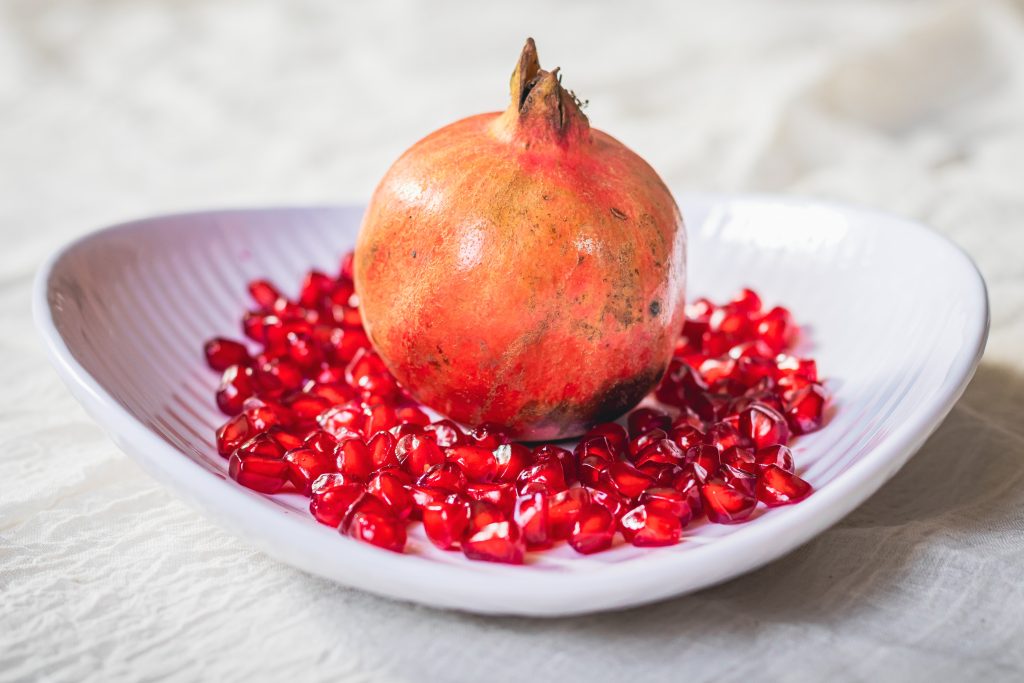Top Allergy-Fighting Foods

As we transition from the cold winter months, many of us look forward to new growth that happens all around us during springtime. Vibrant flowers and budding trees can be incredibly beautiful, but for about 26% of adults (67 million) and 19% of children (14 million), their beauty is dampened by sneezing, watery eyes, runny nose, and other stubborn seasonal allergy symptoms. And for some, these symptoms can be much more severe, such as asthma. Unfortunately, as our climate gets hotter, the allergy season is lengthening and becoming more intense. New research in the journal Nature shows that if greenhouse gases remain high, we could eventually see an allergy season that starts 40 days earlier along with higher concentrations of pollen. Yet this is not just a future problem, pollen season in North America was 20 days longer in 2018 compared to 1990. Given these changes, the question becomes what can we do to make our bodies more resilient in the face of rising environmental allergens?
We need to understand the root cause of what triggers an allergic response: our immune system! Allergies are an immunoglobulin E (IgE)-mediated inflammatory condition. And guess what? 70-80% of our immune system is in the gut. This means that if our gut is out of balance, we are more likely to have an immune reaction to otherwise harmless compounds such as pollen, dust mites, and animal dander. Gut imbalances can be caused by many things including chronic medication use like antibiotics and proton pump inhibitors, eating a highly processed/high sugar diet, celiac disease, chronic stress, physical trauma, and drinking too much alcohol. These and other factors can drive gut inflammation and intestinal permeability (leaky gut), making it harder for our body to defend against environmental compounds. This can also lead to an over-reaction of immune cells.
Part of our immune cells include white blood cells known as mast cells. These cells release a variety of bioactive substances, one of which is histamine, that turn on an immune response. Mast cells have many important functions in the body, but overproduction of histamine or inability to degrade histamine quick enough can lead to histamine overload and allergic disorders. This is why many allergy medications target the stabilization of mast cells to help reduce or prevent allergy symptoms. Also, it turns out that the activation of mast cells plays a role in several diseases including irritable bowel syndrome, inflammatory bowel disease, intestinal infections, and more.
Histamine build-up can lead to a variety of uncomfortable symptoms including:
- Headaches and migraines
- Runny nose or nasal congestion
- Low blood pressure
- Diarrhea or constipation
- Bloating
- Skin hives and itching
- Dizziness
- Changes in menstrual cycles
- Anxiety and rapid heart rate
Many things can drive mast cell activation and histamine build-up including nutrient deficiencies, eating foods that trigger an immune response, low levels of diamine oxidase (DAO) enzyme (responsible for breaking down histamine), gut microbiome imbalances, genetic factors, impaired detoxification, among others.
So, what can you do? The good news: we have found that a large percentage of our patients experience significant relief or complete resolution of their allergic symptoms when they remove gluten and dairy from their diet. These can trigger an immune response in many people which can drive inflammation, sinus congestion, mucus product, and/or intestinal permeability. For these reasons, we recommend trying an elimination of both. But this is not just about what to remove. There are several foods with specific compounds that help mediate the immune response, reduce inflammation, and stabilize mast cells naturally!
Here are my top allergy-fighting foods:
- Foods high in luteolin, quercetin, and rutin. These compounds are in the family of flavonoids, a class of plant pigments that possess antioxidant, antimicrobial, anti-allergic, and anti-inflammatory properties. These flavonoids have been shown to inhibit the activation of mast cells and regulate inflammatory cytokines. Some of the best dietary sources of flavonoids are:
- Onions, apple skin, tea, coffee, parsley, green pepper, tomato, celery, and orange.
- Turmeric is a spice that dates back about 4,000 years to the Vedic culture in India. It has been used in cooking for centuries and is an important part of Ayurvedic medicine. Modern science has uncovered that curcumin, the active compound in turmeric, has potent anti-inflammatory, anti-cancer, and antioxidant properties. Research also shows that curcumin may inhibit mast cell-dependent allergic reactions.
- Nettle is an herb that is traditionally consumed in the form of tea. Nettle contains several beneficial compounds including adenine, nicotinamide, and osthole which possess anti-inflammatory and anti-allergenic properties. They may also block histamine production and inhibit release of immune cells like eosinophils and leukocytes. In one study, 40 people took either 150mg of nettle or a placebo for 1 month. Those in the nettle group had fewer nasal eosinophil count and improved symptoms.
- Moringa is a plant otherwise known as the drumstick or miracle tree. Like turmeric, it has been used for centuries for its medicinal and anti-inflammatory properties. It is incredibly nutrient-dense and has been used historically to treat malnutrition because it contains vitamin A, B-complex vitamins, calcium, potassium, iron, magnesium, phosphorous, and zinc. Research suggests that topical moringa can improve atopic dermatitis through regulating the inflammatory response.
- Pomegranate extract is a rich source of polyphenols that may help to reverse intestinal permeability and help beneficial gut bacteria thrive. Research indicates that pomegranate and pomegranate extract have anti-inflammatory effects through suppression of mast cells by influencing gene expression, decreasing production of interleukin (IL)-6 and IL-8, as well as nuclear factor kappa B (NK-kB).
If you continue to struggle with symptoms of histamine overload despite removing gluten and dairy while increasing these foods listed above, or you have signs of mast cell activation syndrome where you experience repeated episodes of severe allergic reactions like anaphylaxis, we encourage you to work with a licensed functional medicine practitioner. You may benefit from functional lab testing and find that you require specific treatment, targeted supplements, and/or guidance on a low histamine diet for a period of time while your body heals.

